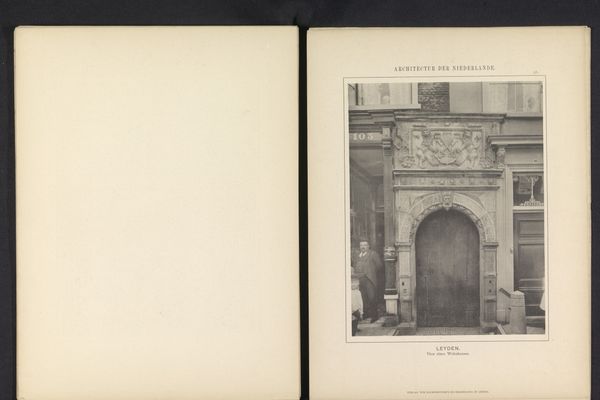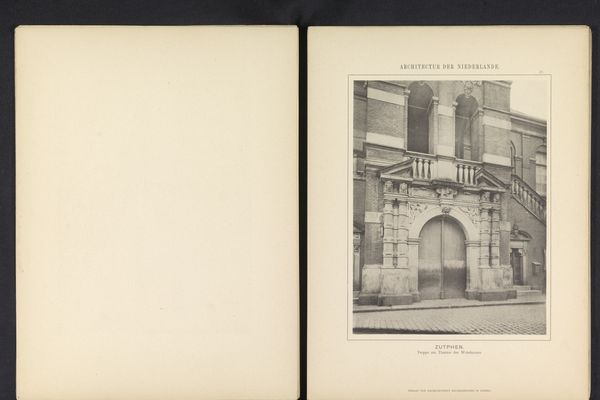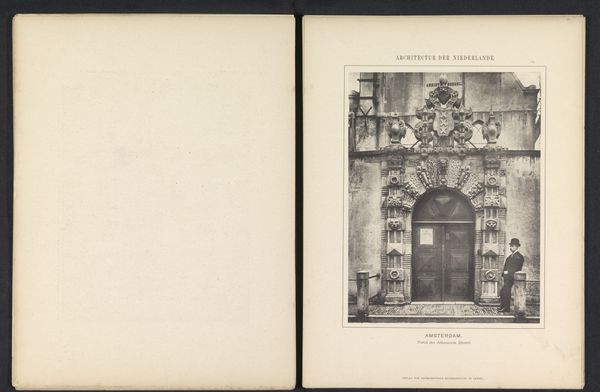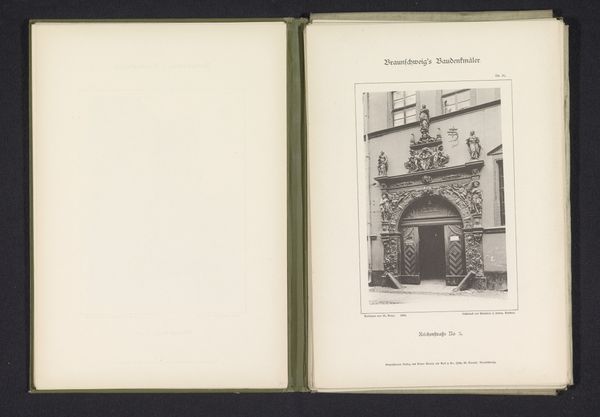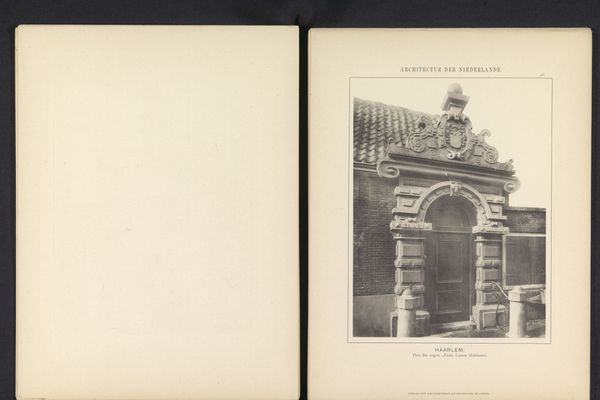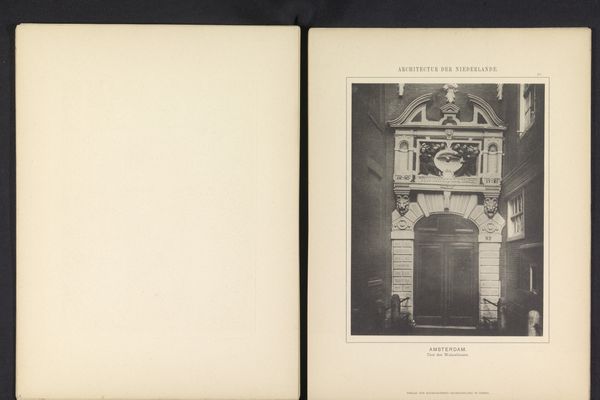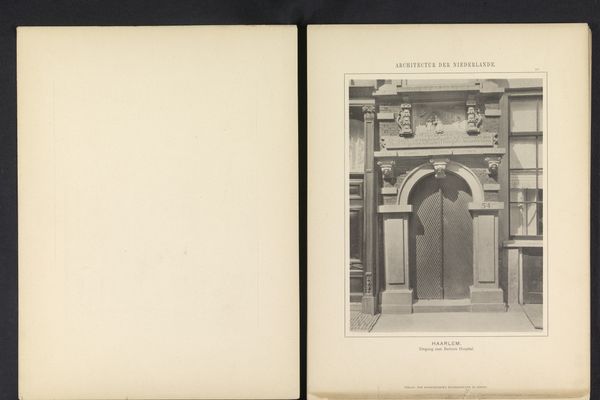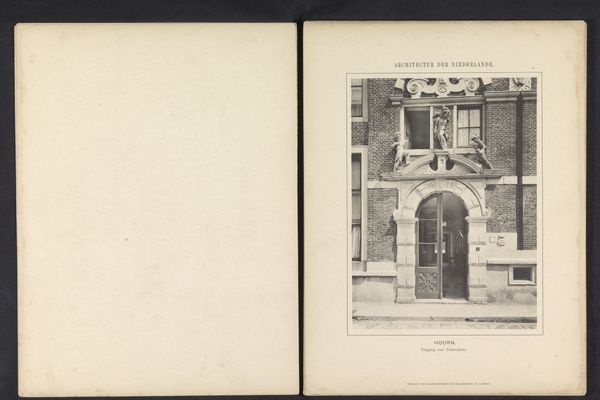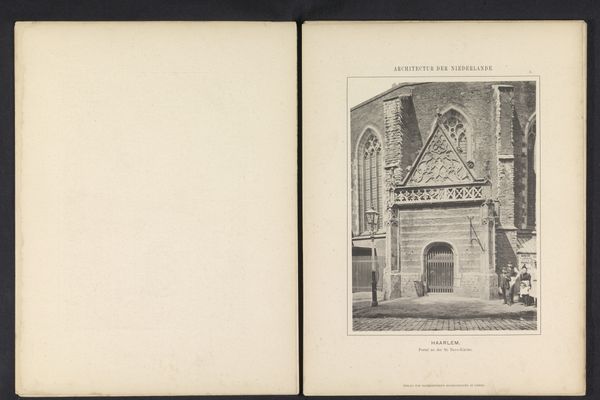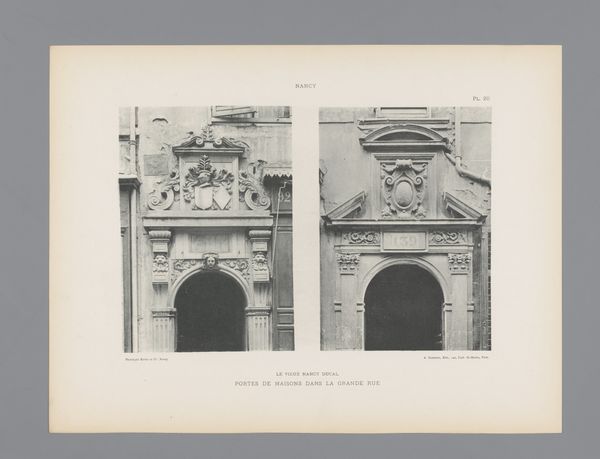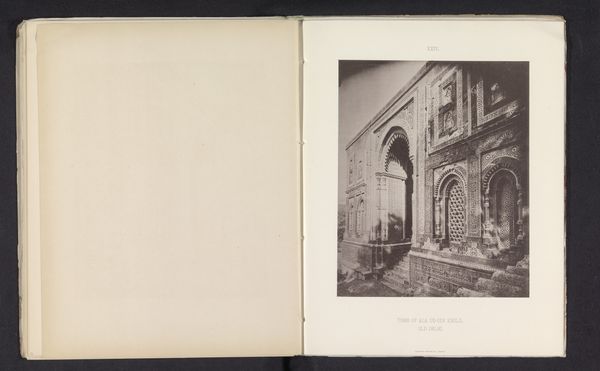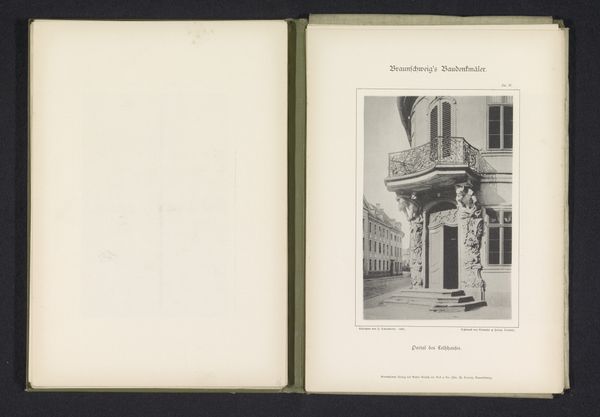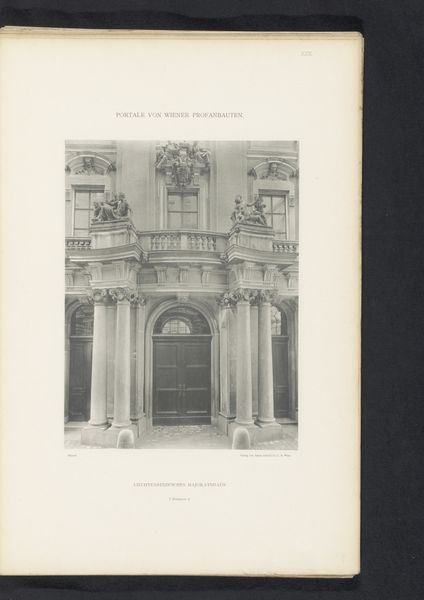
Gezicht op een gedecoreerde poort van het stadhuis van Nijmegen before 1894
0:00
0:00
print, paper, photography, architecture
#
dutch-golden-age
# print
#
paper
#
photography
#
cityscape
#
paper medium
#
architecture
#
realism
Dimensions: height 257 mm, width 196 mm
Copyright: Rijks Museum: Open Domain
Curator: Immediately, the weight of history hits you, doesn't it? Such gravitas and meticulous detail... Editor: Precisely. I am about to introduce "Gezicht op een gedecoreerde poort van het stadhuis van Nijmegen"—or "View of a Decorated Gate of Nijmegen Town Hall"—an anonymous print and photograph from before 1894, here at the Rijksmuseum. Curator: It’s the framing that captures my attention—the deliberate focus on the portal, extracting it from the broader urban fabric. This photographic approach serves to elevate the portal as a distinct visual statement, ripe with architectural and civic meaning. Editor: The labor evident in crafting such a doorway would have been significant, think of the stonemasons, carvers and designers all employed. This civic building stands not just as an edifice, but as the result of collective human endeavor. Its decorative choices reflecting wealth and social values. Curator: I agree entirely. Structurally, we see a masterful use of classical elements—pilasters, pediments, and sculpted figures. The rhythmic balance achieved through their arrangement generates an overwhelming impression of ordered elegance and hierarchical stability. Note, too, the semiotic implications of such architectural vocabulary when read in its broader urban context. Editor: Indeed. Moreover, by documenting this particular moment, the photograph becomes an archive of craftsmanship. Every chisel mark, every join tells a silent narrative about skill and about work conditions prevalent when it was made. Curator: Do you find something melancholic, even, in how this specific facade—likely imbued with then-contemporary political symbolism—was chosen to represent not just a city but an entire period of civic expression? The choice itself says so much. Editor: I agree there’s a certain pathos, or rather perhaps, a commentary on how even monumental symbols like this doorway inevitably degrade with time. The photograph has a quality of witness; as much a material artefact produced within specific political constraints as it is the capturing of the door. Curator: That's an astute point. Ultimately, this photograph leaves one pondering the role of representation in defining both historical memory and collective identity through the city. Editor: Agreed. Viewing this photography allows a study into how architecture has stood at the intersection of labour and ideology within urban design.
Comments
No comments
Be the first to comment and join the conversation on the ultimate creative platform.
